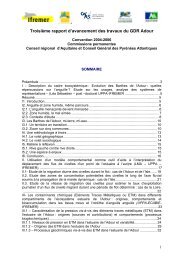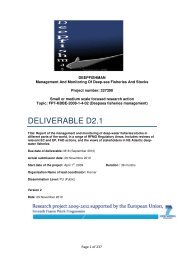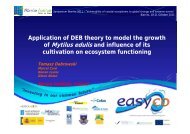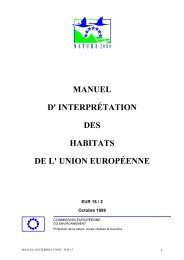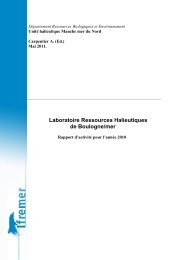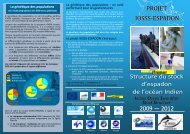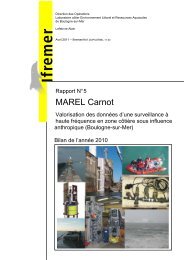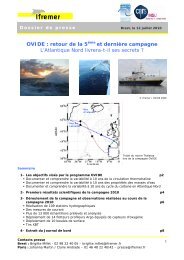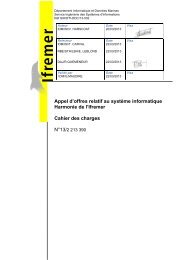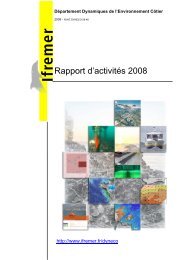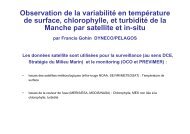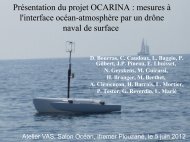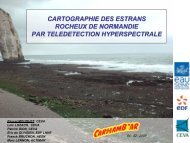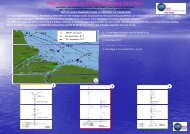Project Deliverable D50 Report on Best Practices Workshop - Ifremer
Project Deliverable D50 Report on Best Practices Workshop - Ifremer
Project Deliverable D50 Report on Best Practices Workshop - Ifremer
Create successful ePaper yourself
Turn your PDF publications into a flip-book with our unique Google optimized e-Paper software.
c<strong>on</strong>tributed in launching this activity, which is well <strong>on</strong> the way now and managed by WP9.<br />
C<strong>on</strong>sequently this is not the topic of this sessi<strong>on</strong>. Indeed we will go <strong>on</strong>e step bey<strong>on</strong>d data<br />
management: we are dealing with data analysis by scientists.<br />
Figure 1: data management plan after the 1 st <strong>Best</strong> practices workshop held in Bremen, Feb.<br />
2008<br />
The purpose of this sub-sessi<strong>on</strong> is to give an overview <strong>on</strong> most comm<strong>on</strong>ly used methods for<br />
l<strong>on</strong>g time-series analysis of data acquired in the framework of deep-sea observatories.<br />
4.4.1.2.3 Specific introducti<strong>on</strong> to Generic sensor package descripti<strong>on</strong><br />
Generic sensors and parameters have been defined in the define in the ESONET deliverable<br />
D13 Secti<strong>on</strong> III “Generic Sensor Module”<br />
Taking <strong>on</strong>ly those sensors that are rated to operate at the deepest ESONET sites, have an<br />
established endurance of approximately a year or more, and are commercially available, the<br />
remaining sensors make up a rather minimal subset of sensors now available for deep-sea<br />
research. This minimal set of instruments has been widely accepted by the General Assembly,<br />
a meeting ESONET workpackage 3 and 5 members, <strong>Best</strong> Practice workshops, and the<br />
ESONET Science Council as the best soluti<strong>on</strong>.<br />
Defining a list of ‘generic sensors’ or ‘the’ generic sensor immediately gives rise to<br />
discussi<strong>on</strong>s between members of different research disciplines (biology, geophysics,<br />
microbiology, oceanography) and working areas (shallow or deep, open ocean or coastal)<br />
about what a generic sensor should be able to measure. However, defining a list of generic<br />
sensors and variables is important to ensure a c<strong>on</strong>sistent set of data is acquired at the<br />
ESONET sites. Defining these sensors will help in setting up accuracy, calibrati<strong>on</strong>, and data<br />
handling standards for specific purposes.<br />
<str<strong>on</strong>g>Deliverable</str<strong>on</strong>g> #50 - update October 2010 16



